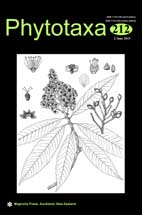Abstract
Details of exine morphology (SEM studies of 132 species) and anatomy (TEM studies of 25 species) of Saxifraga are reported. The variation observed was compared with that found in an earlier survey. We suggest modifications to known types and subtypes and the addition of new ones, making a total of nine exine types and subtypes in Saxifraga. Taxonomic conclusions include the following. A novel exine type (Type 2.3), in which the single tectum has numerous microchannels, is a putative synapomorphy for sects. Heterisia and Irregulares. At least three species from sect. Ciliatae, viz., S. lychnitis, S. oresbia from ser. Lychnitidae, and S. nigroglandulifera from ser. Nutantes, have a novel type with a perforate-reticulate or perforate-rugulate tectum. Species from the rest of the section are uniformly finely striate. Section Saxifraga has Type 2.1, with a single tectum, Type 4.3, with a double tectum, and Type 2.2, which is intermediate to various extents. The origin of Types 2.1 and 2.2 from Type 4.3 is suggested. Within sect. Saxifraga subsect. Triplinervium, S. wahlenbergii is unique in possessing pollen with a secondary tectum (Type 4.3), resembling the exine of S. androsacea in subsect. Holophyllae. On this and other grounds, we support the transference of S. wahlenbergii to the latter subsection. Himalayan species with opposite rather than alternate leaves that were formerly assigned to sect. Porphyrion subsect. Oppositifoliae, have exines with supratectal ornamentation similar to that in subsect. Kabschia; in this respect they are unlike the European species with opposite leaves, which lack this ornamentation. Among the species with chalk-glands, exines lacking supratectal ornamentation are restricted to European species, viz. those in sect. Porphyrion subsects. Engleria and Oppositifoliae, and S. florulenta, offering morphological support for the transfer of the latter species to sect. Porphyrion. Saxifragella is recognised as a new section of the genus.

